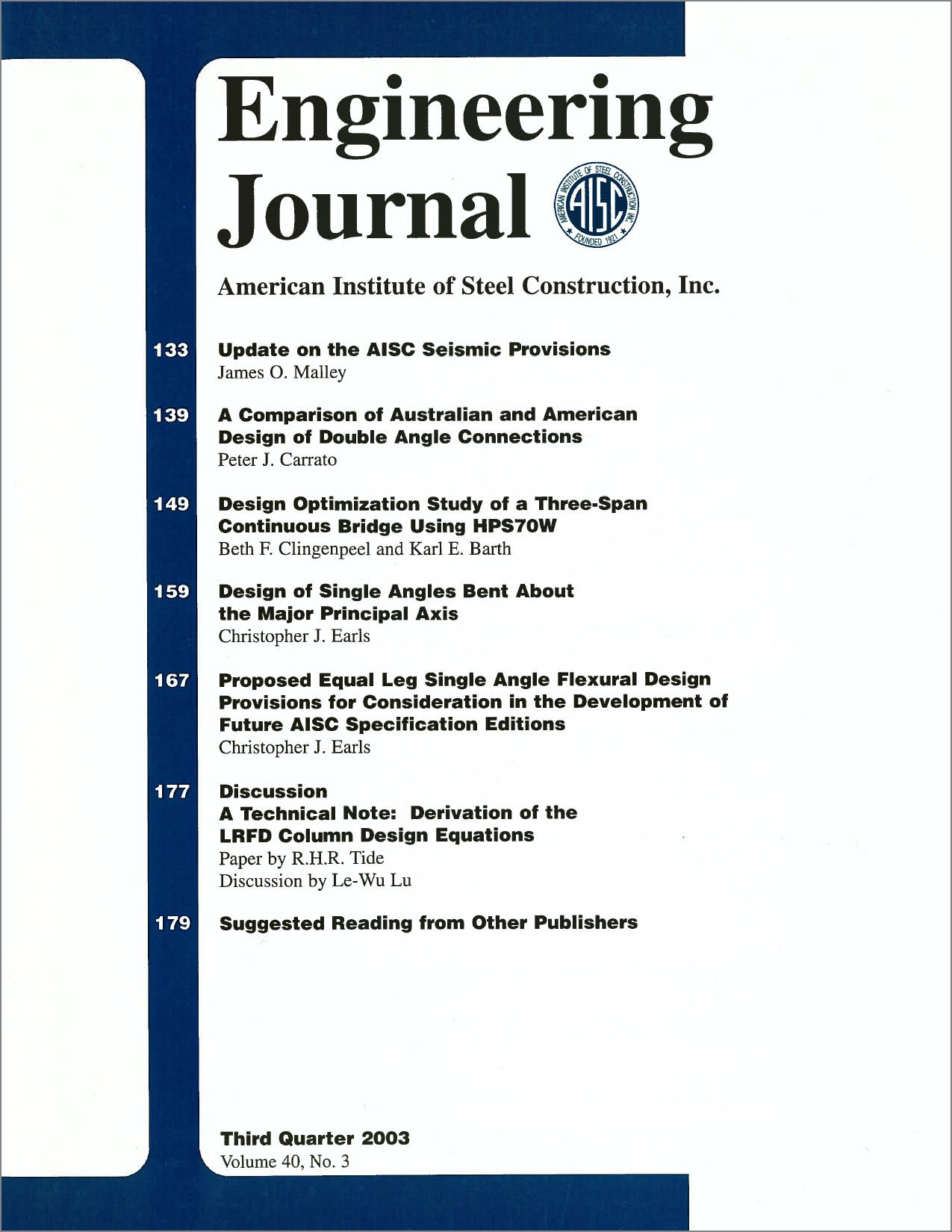A Comparison of Australian and American Design of Double Angle Connections
DOI:
https://doi.org/10.62913/engj.v40i3.810Abstract
A large boiler support structure for a coal-fired power plant in Australia was designed by a structural engineer in the United States. Approximately 9,000 tons (8,181 tonnes) of structural steel for this project was supplied from a steel fabricator in China, using shop drawings prepared by an American detailing firm. A registered professional engineer from the designer's Australian offices supervised the work in the United States to ensure compliance with local codes and standards. Member sizes were selected from ASTM shapes, using the provisions of the Australian Standard for steel structures AS4100 (Council of Standards, 1998). However, to expedite steel delivery, it was decided to allow the detailing firm to prepare connection designs using the American Institute for Steel Construction's (AISC), Specification for Structural Steel Buildings—Allowable Stress Design and Plastic Design (ASD) (AISC, 1989). Demonstrating the compatibility of connection designs prepared using these two methods highlighted the unique difference between simple code compliance, and the art of connection design. The intent of this study is not to establish the appropriate limit states for a clip angle connection. There are numerous references that deal with this topic (Birkemoe and Gilmor, 1978; Munse, Bell and Chesson, 1959). The purpose is also not to demonstrate that one country's design approach is either superior to or less conservative than that of another country. What has been shown is that, given a structural design problem as common as a clip angle, two different approaches to engineering, based on training and experience, can interpret relatively similar design specifications, to produce significantly different results.

